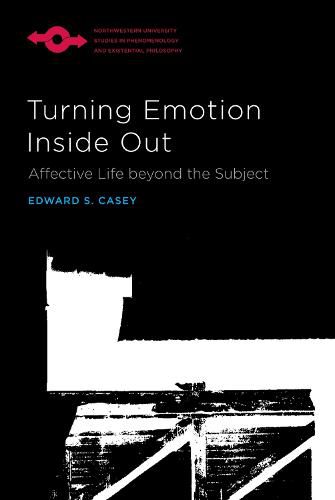Readings Newsletter
Become a Readings Member to make your shopping experience even easier.
Sign in or sign up for free!
You’re not far away from qualifying for FREE standard shipping within Australia
You’ve qualified for FREE standard shipping within Australia
The cart is loading…






In Turning Emotion Inside Out, Edward S. Casey challenges the commonplace assumption that our emotions are to be located inside our minds, brains, hearts, or bodies. Instead, he invites us to rethink our emotions as fundamentally, although not entirely, emerging from outside and around the self, redirecting our attention from felt interiority to the emotions located in the world around us, beyond the confines of subjectivity.
This book begins with a brief critique of internalist views of emotion that hold that feelings are sequestered within a subject. Casey affirms that while certain emotions are felt as resonating within our subjectivity, many others are experienced as occurring outside any such subjectivity. These include intentional or expressive feelings that transpire between ourselves and others, such as an angry exchange between two people, as well as emotions or affects that come to us from beyond ourselves. Casey claims that such far?out emotions must be recognized in a full picture of affective life. In this way, the book proposes to turn emotion inside out.
$9.00 standard shipping within Australia
FREE standard shipping within Australia for orders over $100.00
Express & International shipping calculated at checkout
In Turning Emotion Inside Out, Edward S. Casey challenges the commonplace assumption that our emotions are to be located inside our minds, brains, hearts, or bodies. Instead, he invites us to rethink our emotions as fundamentally, although not entirely, emerging from outside and around the self, redirecting our attention from felt interiority to the emotions located in the world around us, beyond the confines of subjectivity.
This book begins with a brief critique of internalist views of emotion that hold that feelings are sequestered within a subject. Casey affirms that while certain emotions are felt as resonating within our subjectivity, many others are experienced as occurring outside any such subjectivity. These include intentional or expressive feelings that transpire between ourselves and others, such as an angry exchange between two people, as well as emotions or affects that come to us from beyond ourselves. Casey claims that such far?out emotions must be recognized in a full picture of affective life. In this way, the book proposes to turn emotion inside out.